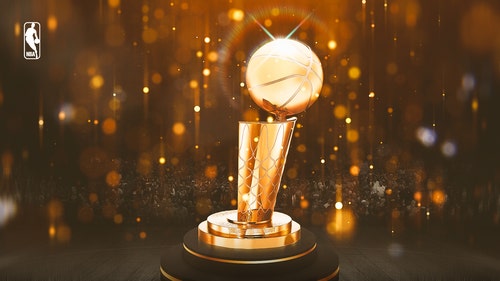NBA in Mexico: G League team hopes it's laying foundation
MEXICO CITY (AP) — A reggaeton song by Puerto Rican artist Daddy Yankee is blasting through the Arena Ciudad de México with the lights out while fans wave their cell phones and dance to the rhythm of the music.
Then comes a drumbeat followed by a loud “Ca-pi-ta-nes, Ca-pi-ta-nes” chant.
Welcome to NBA G League action in Mexico City. And if fans get their wish, the atmosphere at Capitanes' games will become the staple for home games of an actual NBA team in the city. It’s a longshot but that hasn’t dampened the optimism.
When NBA Commissioner Adam Silver visited Mexico in December, he said the Capitanes would give the league a great opportunity to see if Mexico could be considered for a franchise in the future.
So far, it appears the organization is on the right path.
Though the Capitanes lost a three-way tiebreaker and missed the G League playoffs — the finals begin Tuesday — they provided some answers to off-court concerns in their first season in Mexico City.
Following their inaugural G League season in Fort Worth, Texas, due to the pandemic, the Capitanes settled into the state-of-the-art Arena Ciudad de Mexico — a glass-clad facility located in the north part of the city that cost $300 million to build and opened in 2012.
Attendance was a concern, but team president Rodrigo Serratos said the Capitanes top the G League in selling individual tickets and rank fifth in total attendance despite their home arena not being located near downtown Mexico City.
“We have a big arena, so we are working with a small set-up, but we have been averaging around 65% of its capacity," Serratos told The Associated Press. “So far, it´s been pure magic."
There also are safety concerns about having a permanent team in Mexico City. As recently as Monday, four people were killed in what is believed to have been drug gang-related violence. The killings came less than a week after a U.S. tourist was shot in the leg in the nearby town of Puerto Morelos.
The U.S. State Department issued a travel alert last month warning travelers to “exercise increased caution,” especially after dark, at Mexico’s Caribbean beach resorts like Cancun, Playa del Carmen and Tulum, which have been plagued by drug gang violence in the past.
Alfonzo McKinnie, who played for four NBA teams before coming to the Capitanes, had said before the season ended that he feels comfortable in the city.
“Everybody I know from players to family and friends asked me about safety, but we live in Polanco one of the nicest parts of Mexico City and I tell them we are as safe as one can be,” McKinnie said.
Several players live in Polanco, one the wealthiest neighborhoods in Mexico City with some of the best restaurants, luxury hotels and expensive condos. The area is also one of the safest in the capital, with a strong police presence day and night. It is where NFL, MLB and NBA teams stay whenever they visit Mexico to play regular season games.
Serratos said McKinnie, along with Kenneth Faried and Gary Clark, are enjoying their experience with the Capitanes while hoping for another NBA opportunity.
“All the American players said that they did not expect to find a country like this. The feedback that we are getting from them is that they are very happy and want to keep playing here," said Rodrigo Serratos, the team president. “The city offers a lot of things; we are a rich country in experiences for foreigners.”
Since 1992, when the Houston Rockets played the Dallas Mavericks, Mexico has hosted 30 NBA games out the 117 that the NBA has played outside of the U.S. and Canada in its history.
Silver has said having a G League team in Mexico City gives the league an opportunity to better understand the challenges that come with dealing with the local culture, a different language and all the other circumstances around possibly having an NBA franchise in the city one day.
Soccer is still king among sports in the country, but there are more basketball courts than soccer fields in Mexico and the fans have shown in the past how loyal they are. Before the Capitanes, the Mexico City Aztecs played in the defunct Continental Basketball Association in 1994 and averaged 9,000 fans a game.
“You can call it love, passion or solidarity — any of those adjectives describe what the basketball culture in this country is, and that is what the NBA has found here,” said Raul Zarraga, the director of the NBA office in Mexico.
Besides the reggaeton music that booms during game breaks, there is a fan who brings a drum to cheer for the Capitanes. “The Mexicans are very passionate with sports; they are very involved and noisy," Serratos said, adding that the team had to get a special permit from the NBA for the fan's drum. "It is a different atmosphere here than in any other G League venue.”
Despite the early success of the Capitanes, fans should not expect to see an NBA expansion team in Mexico City anytime soon. The last time the league expanded was in 2004 with a franchise in Charlotte, North Carolina. Before that, the league expanded in 1995 with two teams in Canada.
Other cities, including Las Vegas and Seattle, also could be ahead of Mexico City when and if the NBA considers an expansion in the future.
Until then, fans can continue to party with the Capitanes.
___
AP NBA: https://apnews.com/hub/NBA and https://twitter.com/AP_Sports





